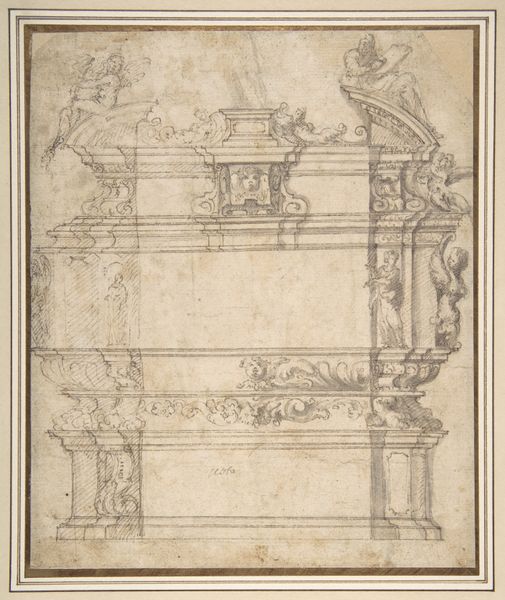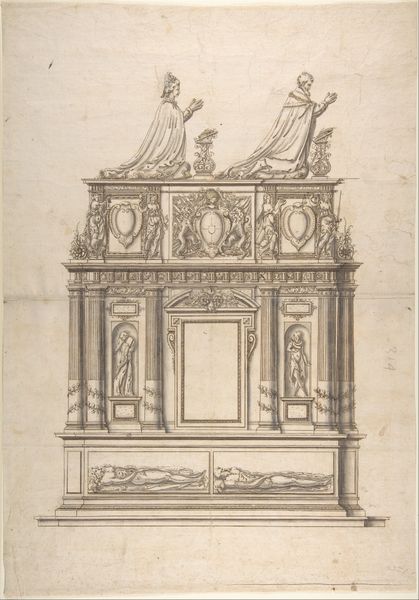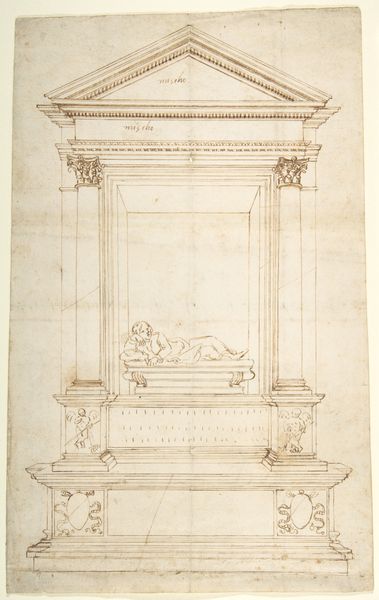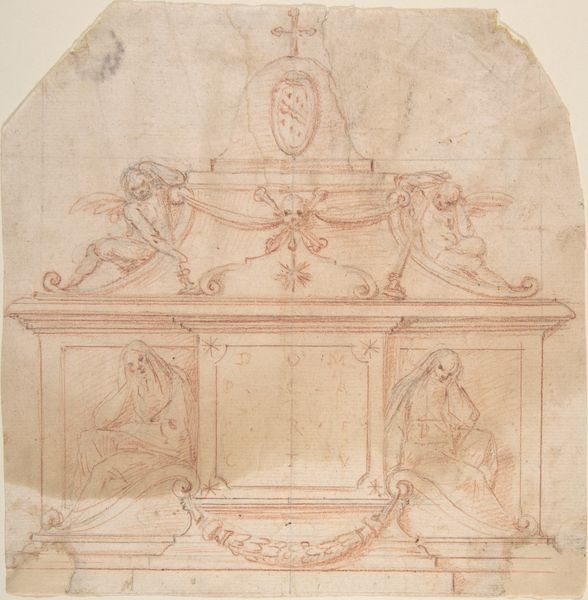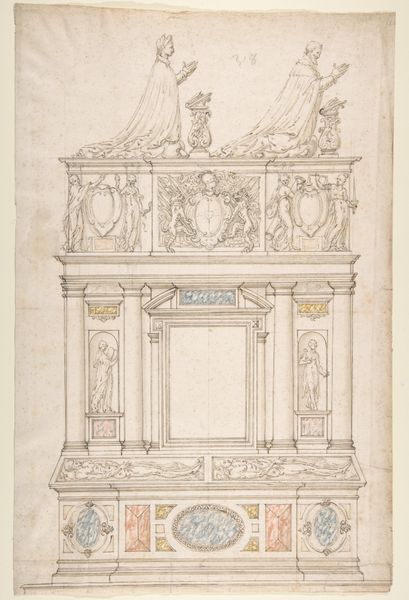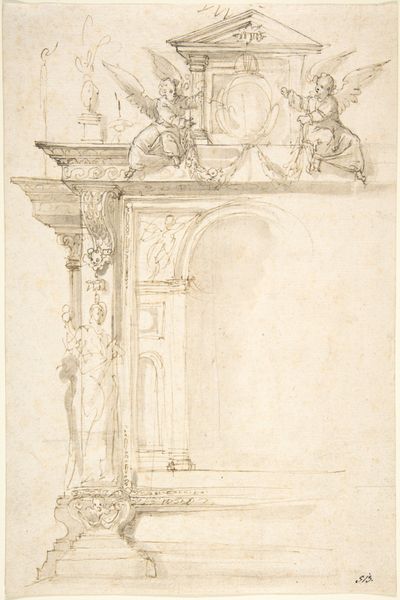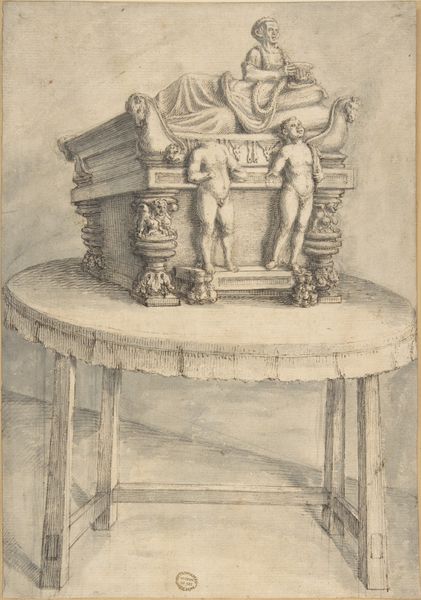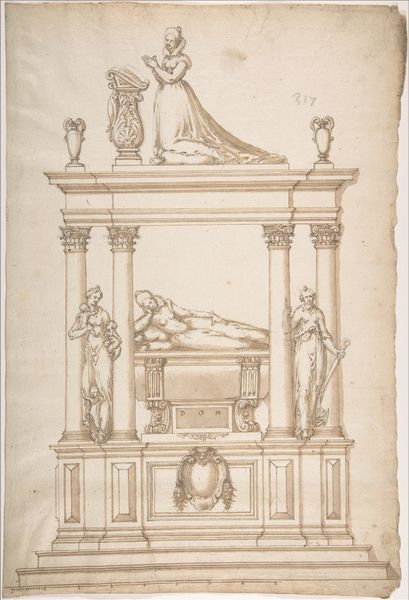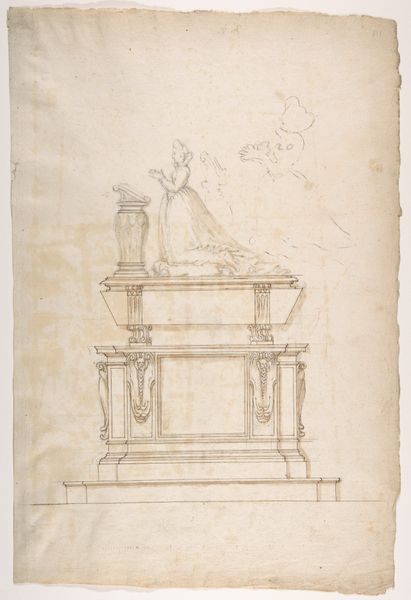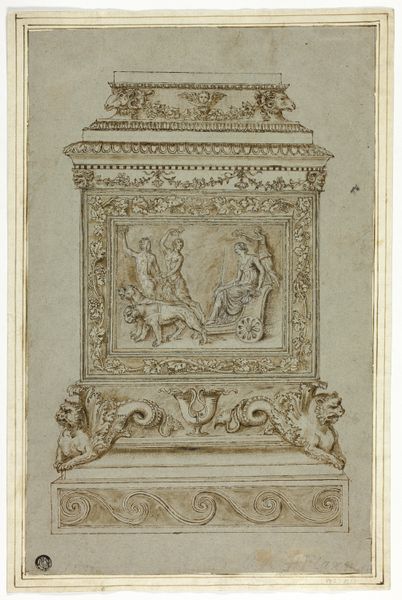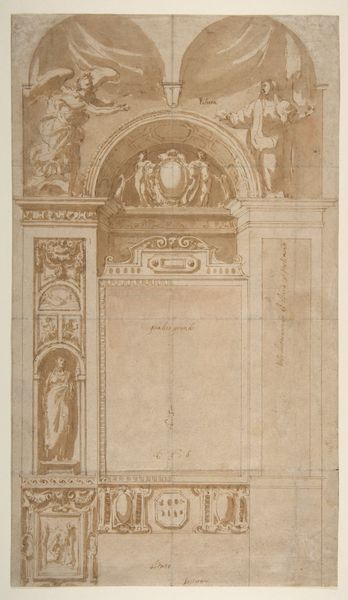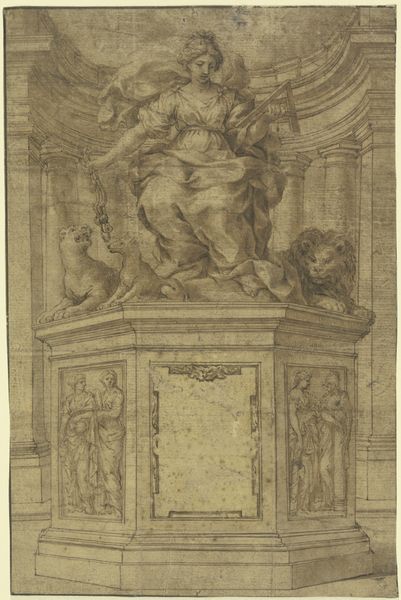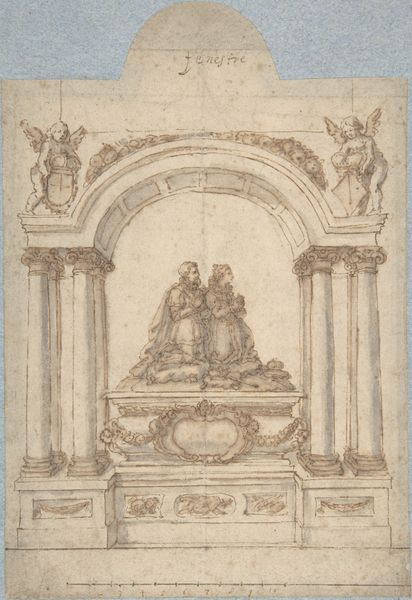
Studies for a Kneeling Figure of Christ and Altar Fronts. 1652 - 1725
0:00
0:00
drawing, print, pencil
#
drawing
#
baroque
# print
#
pencil
#
watercolor
Dimensions: sheet: 8 1/8 x 5 7/8 in. (20.7 x 14.9 cm)
Copyright: Public Domain
Curator: Here we have Giovanni Battista Foggini’s “Studies for a Kneeling Figure of Christ and Altar Fronts,” created sometime between 1652 and 1725. It's currently held here at The Met. Editor: The muted tones and the rough sketch-like quality give it an almost ghostly feel. It’s interesting how the figures seem to float above the altar designs. Curator: Indeed. Foggini’s work here, executed in pencil, watercolor, and perhaps print, masterfully deploys line and shading to create a sense of depth and volume. Observe how the baroque dynamism informs the composition—the kneeling Christ figures capture movement, reflecting emotional intensity, especially when juxtaposed to the proposed static design for the altars below. Editor: Looking at the altar designs, one has to wonder about the craftsmanship that would have been required to bring those ornate carvings to life. Were they ever actually realized, I wonder? And if so, by whom? The sketches certainly conceal the labor that these designs would represent. The drawing, after all, lacks texture—lacking any sense of the "made" quality present in the imagined result. Curator: Precisely, that materiality, or the question thereof, complicates our analysis. But focusing on the work as a self-contained artifact allows us to isolate formal strategies, such as his application of contrast... notice how the architectural rendering utilizes sharp and clear lines against the fluid and evocative rendition of the figures above? Editor: Still, it's difficult to divorce the image from the socioeconomic system it represents. Those altars were presumably intended for a place of worship, perhaps for an elite patron. This object serves as a fascinating window into the intersection of art, religion, and power of the time, no? The physical materials, the pigment, paper, all represent expenditure and human effort. Curator: An interesting reading of it, yes. Although for me, it boils down to how such stark forms, be it the figures or line detail on the prospective altar facades, so boldly showcase design principles. The play of shadow across a bare page remains an artistic expression in its own right. Editor: I’d say so. And looking at the artwork, and considering your reflections on its composition along with the production of such an object in a studio or workshop... a more complete understanding slowly reveals itself.
Comments
No comments
Be the first to comment and join the conversation on the ultimate creative platform.
